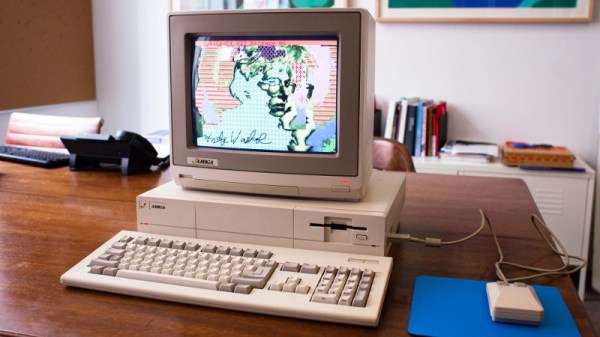In the mid 1980s, there was a rash of 16-bit computers entering the market. One of them stood head and shoulders above the rest: Commodore’s Amiga 1000. It had everything that could reasonably be stuffed into a machine of the period, and multimedia capabilities the rest wouldn’t catch up on for years. [Celso Martinho] has managed to secure one of those first machines, and has shared his tale of bringing it back to life.
 The post is as much a love letter to the Amiga and review of A1000 peripherals as it is a restoration, which makes it a good read for retrocomputing enthusiasts. He recapped it and it wouldn’t boot, the solution of which turned out to be a reminder for the rest of us.
The post is as much a love letter to the Amiga and review of A1000 peripherals as it is a restoration, which makes it a good read for retrocomputing enthusiasts. He recapped it and it wouldn’t boot, the solution of which turned out to be a reminder for the rest of us.
The machine had a RAM upgrade in the form of a daughterboard under the processor, its pins had weakened the leaves of the processor socket so it wouldn’t make contact. So don’t forget to replace sockets as well as capacitors.
The resulting machine is much faster thanks to a modern upgrade with a much quicker processor, memory, and an SD card for storage. He goes into some of the other upgrades available today, all of which would have had early-1990s-us salivating. It’s fair to say that in 2025 an A1000 is more 40-year-old curio than useful modern computer, but we can’t fail to admit to a bit of envy. The Amiga holds a special affection, here.














